Monastery Bamboo Tree
- October 29, 2024
- 0 comment
The Monastery Bamboo Tree, scientifically known as Thyrsostachys Siamensis, is a striking bamboo species celebrated for its ecological and cultural significance. Found widely in Southeast Asia, it plays a crucial role in supporting local ecosystems, particularly in Thailand, Laos, and Myanmar.
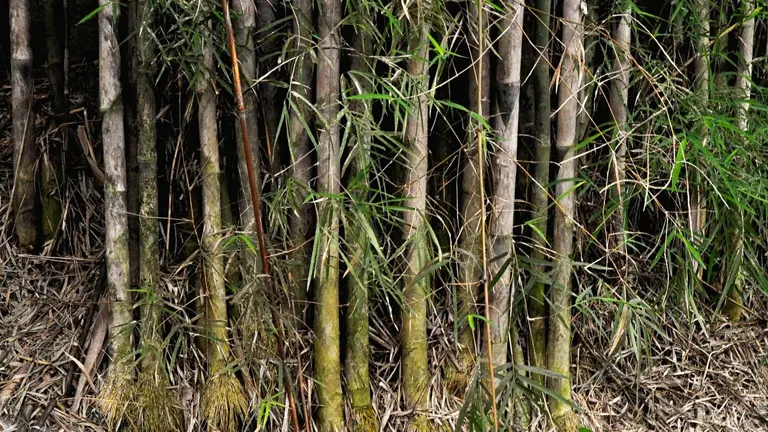
This bamboo variety belongs to the grass family, Poaceae, and is especially valued for its resilience, fast growth, and ability to prevent soil erosion, making it vital for biodiversity and environmental health.
What Is a Monastery Bamboo Tree?
The Monastery Bamboo Tree, Thyrsostachys Siamensis, is a dense, clumping bamboo known for its tall, elegant culms (stems) and feathery, bright green leaves. It is commonly planted near temples and monasteries in Southeast Asia, where it is appreciated for its ornamental beauty and practical uses. This bamboo can grow up to 30 feet tall, and its culms are smooth, green when young, and gradually turn yellowish as they mature.
Characteristics of Monastery Bamboo:
- Leaves: Narrow, lance-shaped, and bright green.
- Flowers: Infrequent and, like many bamboos, flowers only once every few decades before dying, a phenomenon known as gregarious flowering.
- Bark: Smooth, with an attractive yellow-green hue on older stems.
- Roots: Deep-rooted and fibrous, ideal for preventing soil erosion.
Monastery Bamboo is known for its dense growth pattern, which allows it to form thick, protective clusters that are both aesthetically pleasing and highly functional for soil stabilization.
Different Types of Monastery Bamboo Tree Species
The genus Thyrsostachys includes a few notable species, with Thyrsostachys Siamensis being the most well-known. This species is distinguished from others by its unique clumping growth pattern, which makes it suitable for ornamental planting and erosion control.
Thyrsostachys Siamensis
The primary species associated with temples in Thailand, it grows in dense clumps and is highly resistant to drought.
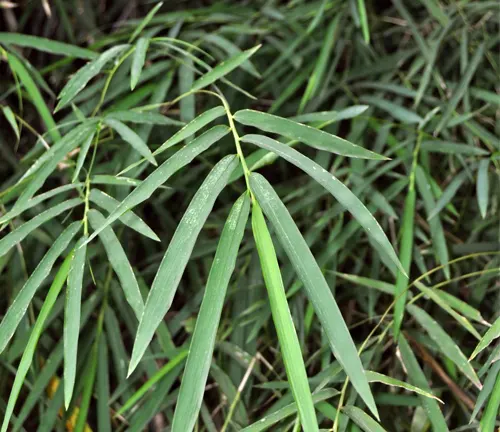
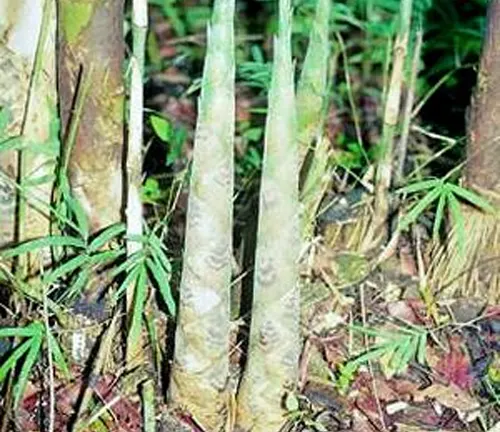
Thyrsostachys Oliveri
Known for a similar clumping form but shorter in stature, this species is sometimes used in smaller gardens or as a natural fence.
Each species provides essential ecological benefits, such as shelter for small animals and insects, while also serving as a renewable resource in its native region.
Where Do Monastery Bamboo Trees Grow?
Monastery Bamboo is native to the tropical and subtropical regions of Southeast Asia, thriving in countries such as Thailand, Laos, Myanmar, and parts of Cambodia. This bamboo species prefers well-drained soil and warm, humid environments, although it is remarkably adaptable to arid climates once established. It can be found along riverbanks, in lowland forests, and near human settlements, where it is often planted for both aesthetic and practical purposes.
Ecological Role in Native Habitat:
Monastery Bamboo plays an essential role in its ecosystem by stabilizing riverbanks and hillsides. Its dense root network helps prevent soil erosion, especially in areas prone to heavy rainfall, while its towering culms provide shelter for birds, small mammals, and insects.
How to Grow and Care for Monastery Bamboo Tree
Growing Monastery Bamboo is relatively straightforward, and it is often a popular choice for home gardeners due to its low-maintenance nature and attractive appearance.

Planting and Soil Requirements:
- Soil: Prefers well-drained, fertile soil with organic matter.
- Watering: Moderate water needs; requires more frequent watering in dry climates, especially during the initial growth period.
- Sunlight: Thrives in full sun to partial shade.
Propagation and Maintenance:
Monastery Bamboo can be propagated by division, making it easy to grow new plants from existing clumps. This bamboo generally does not require pruning, but any dead or damaged culms can be removed to promote new growth. Protection from pests, such as bamboo mites, is recommended to ensure healthy growth.
Ecological Benefits of Monastery Bamboo Tree
Monastery Bamboo offers numerous ecological benefits to its surroundings:

- Soil Enrichment: Its leaf litter decomposes to enrich the soil, enhancing its fertility and health.
- Erosion Control: Its dense root system binds the soil, preventing erosion on slopes and riverbanks.
- Habitat: Provides shelter and nesting sites for various species, including birds and small mammals.
This bamboo species also absorbs carbon dioxide and releases oxygen, aiding in air purification and combating climate change on a micro level.
Monastery Bamboo Tree Flowering and Pollination
Monastery Bamboo has a unique flowering cycle, typically flowering only once in its lifetime in an event known as gregarious flowering. This process can take several decades and, once complete, the bamboo often dies. The flowers are small, delicate, and usually inconspicuous, but they play a crucial role in the plant’s reproductive cycle.
While Monastery Bamboo is primarily propagated by division, its rare flowering events contribute to genetic diversity within bamboo populations. The seeds are typically dispersed by wind or animals, ensuring natural regeneration.
Is Monastery Bamboo Tree Drought-Tolerant?
Monastery Bamboo is known for its ability to withstand drought conditions once established, making it suitable for regions with periodic water scarcity. Its deep root system allows it to access moisture from lower soil layers, enhancing its drought resilience.
For gardeners in arid regions, providing Monastery Bamboo with occasional deep watering and mulching can help it thrive even during dry spells. However, newly planted bamboo requires regular watering until its roots become fully established.
Monastery Bamboo Tree and Wildlife Interactions
Monastery Bamboo supports a range of wildlife interactions in its native habitats. Its dense clumps offer ideal shelter for birds, small mammals, and insects. Certain species of birds, such as doves and sparrows, use the bamboo for nesting, while other animals find protection within its clusters. Additionally, bamboo shoots serve as a food source for animals, supporting the local food web.
Final Thoughts
The Monastery Bamboo Tree, Thyrsostachys Siamensis, is more than just an ornamental plant; it is a vital component of tropical and subtropical ecosystems. By preventing soil erosion, improving soil quality, and providing shelter to various species, this bamboo supports biodiversity and helps maintain environmental balance. Its resilience and low maintenance requirements make it a favorite among gardeners and conservationists alike. Preserving and planting Monastery Bamboo contributes to sustainable landscaping and ecological health, emphasizing the need for its continued conservation and appreciation in native and non-native regions alike.
Frequently Asked Questions (FAQs)
- What is the Monastery Bamboo Tree, and why is it significant?
The Monastery Bamboo Tree, or Thyrsostachys Siamensis, is a clumping bamboo species native to Southeast Asia, known for its dense, decorative growth and importance in preventing soil erosion. It’s also culturally valued for its beauty and practical uses around temples and homes. - How tall does Monastery Bamboo grow, and what are its main characteristics?
Monastery Bamboo can grow up to 30 feet tall, with smooth, yellow-green stems and lance-shaped leaves. Its strong root system makes it excellent for soil stabilization in gardens and natural habitats. - Where does Monastery Bamboo naturally grow?
It thrives in tropical and subtropical regions, mainly in Thailand, Myanmar, and Laos. This bamboo prefers warm, humid conditions but can adapt to drier climates once established. - What are the ecological benefits of Monastery Bamboo?
Monastery Bamboo enriches soil, prevents erosion, and provides habitat and shelter for various wildlife species. Its dense growth helps protect riverbanks and hillsides from soil degradation. - Is Monastery Bamboo drought-tolerant?
Yes, Monastery Bamboo is drought-tolerant once established. Its deep roots help it access underground moisture, making it a resilient choice for areas with occasional water scarcity. - How is Monastery Bamboo propagated and maintained?
It is easily propagated by dividing clumps. This low-maintenance bamboo requires moderate watering, occasional pruning, and protection from pests to keep it healthy.
We hope this guide has highlighted the beauty and benefits of the Monastery Bamboo Tree. Have tips or experiences with bamboo conservation? Share below to inspire others in sustainable practices, and don’t forget to share this guide with fellow nature enthusiasts!


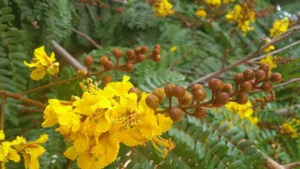
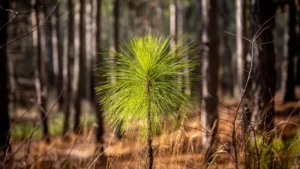
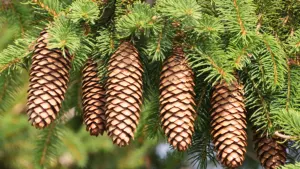

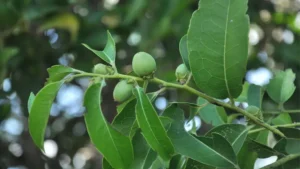

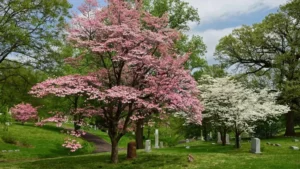
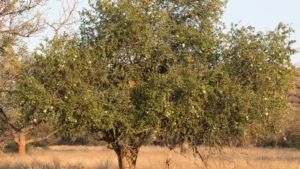
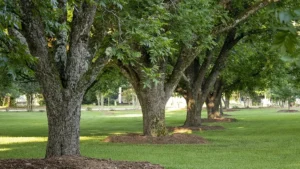
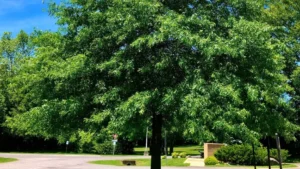
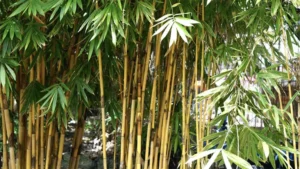

Leave your comment